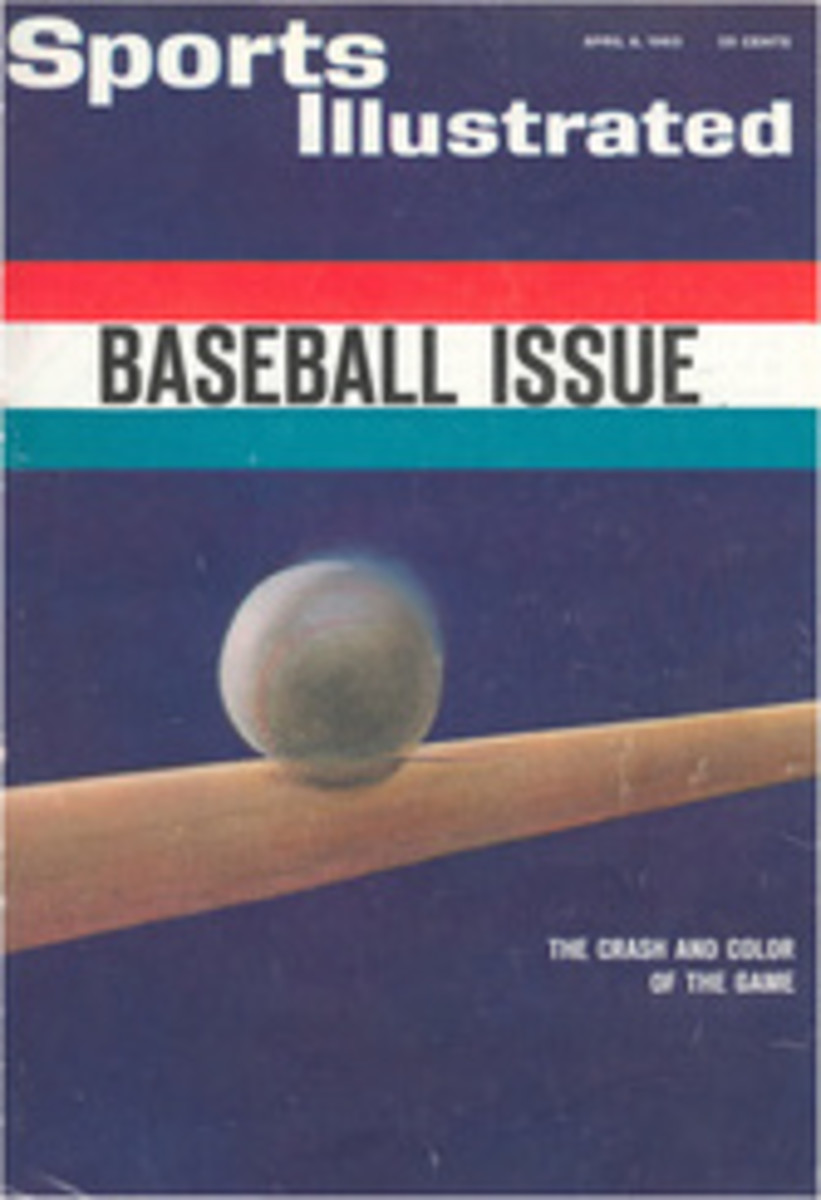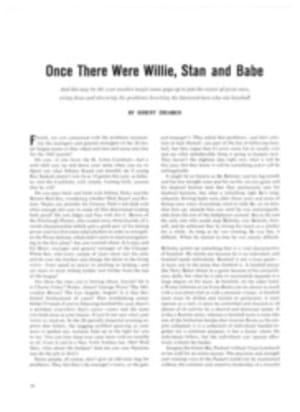
PITTSBURGH PIRATES: The case of the vanishing infield
In the American League the simple way to beat everybody but the Yankees has been to get a new infield. The Orioles, Tigers and Twins, in successive years, have all floated up to second place that way; now the Pirates figure the same technique can work at least as well in the National League, where there aren't any Yankees. In order to give Donn Clendenon (26), Ducky Schofield (28) and Bob Bailey (20), shown at left, a chance to play, the Pirates unloaded Dick Stuart (30), Dick Groat (32) and Don Hoak (35) like remnants at a rummage sale. In return they collected two utility men, an alternate catcher and two pitchers who won 16 games last year—while losing 31. None of these will play much, however, which means that all the pressure is on the relatively young infield. First Baseman Clendenon not only fields and runs better than Stuart, but he fields and runs better than most first basemen in the majors. Shortstop Schofield has served by standing and waiting as a utility man since he was 18. He has a better arm and is faster than Groat ever was, though Groat has no peer at positioning. And Third Baseman Bailey—he of the $175,000 bonus—can already go to either side with agility. But at the plate no one is quite sure of any of the three. Clendenon has an impressive record of hitting consistency, but he strikes out too much for a man who hits the short ball. Schofield has hit well on the two big—but brief—occasions that he got a chance to play regularly. Overall, however, his season averages have not impressed (.229 lifetime in 494 games). Bailey enters the scene with a perfect temperament to handle the lavish praise he receives. "This boy," says Hall of Famer Pie Traynor, without blushing, "is certain to be one of the great hitters of all time." But since he is only two years out of high school, he is not likely to help the weak Pirate attack this year. And the Pirates will need hitting. If the new infield doesn't come through, the Pirates will look sick.
HITTING
Sounding like a brochure, Manager Danny Murtaugh says: "We attempt to form our attack around men who hit in a style conducive to success in the spacious dimensions of Forbes Field." Relieved of the onus of carrying a player who actually tried to hit home runs (Dick Stuart), the long ball will be strictly accidental in Pittsburgh this year. But short hitters abound. Roberto Clemente (.312), the majors' premier exponent of taking the first pitch, hits almost everything else. Bob Skinner and Catcher Smoky Burgess are also .300 line-drive men, and Burgess has no peer at pinch-hitting cold. Clendenon has always hit well (.302 last season as a part-timer) but will get his first full test this year. In his short history Bailey has shown an ability to improve as the season goes along. But it all adds up to only a lot of singles and that's seldom enough nowadays, spacious dimensions or not.
PITCHING
If each of 10 Pirate pitchers repeats his best year the team will win all its games. Actually, both the team and the pitchers may have trouble winning half of them. Newcomers Don Schwall (from the Red Sox) and Don Cardwell (from the Cards) are coming off losing seasons. Harvey Haddix and knuckle-balling Tom Sturdivant are getting old and will spend some time in the bullpen with fork-baller ElRoy Face. Another forkball specialist (though he mixes it with his fast one) is Joe Gibbon, who was injured most of last year. Bob Friend (18-14) will probably remain the ace of the staff, although Alvin McBean (15-10) and Earl Francis (9-8) may be ready to replace him. Rookie lefthander Bob Veale could be the best of them all, but he has the habit of one bad inning a game. If he makes the team this year, he will be used primarily in the bullpen. Vernon Law is undergoing a special program to stretch his arm. If it fails and he has to endure the pain he did last year while pitching, he may decide to retire from the game.
FIELDING
On the Forbes Field infield, which is as hard as the Pennsylvania Turnpike and every bit as dangerous, fielding is a matter of survival. The new Pirate infielders should prove up to the challenge, however. Clendenon is a real improvement after Stuart, and his greater speed and interest afield will make it possible for Bill Mazeroski to hang back a step or two. The league's best second baseman, Mazeroski has played with Schofield enough so that he anticipates no problems with the double play, a department in which the Pirates led the majors last year. In the outfield, Skinner is little more than adequate in left, but Bill Virdon is a top center fielder. Right Fielder Clemente has speed and as good an arm as anyone in baseball.
PHOTO

